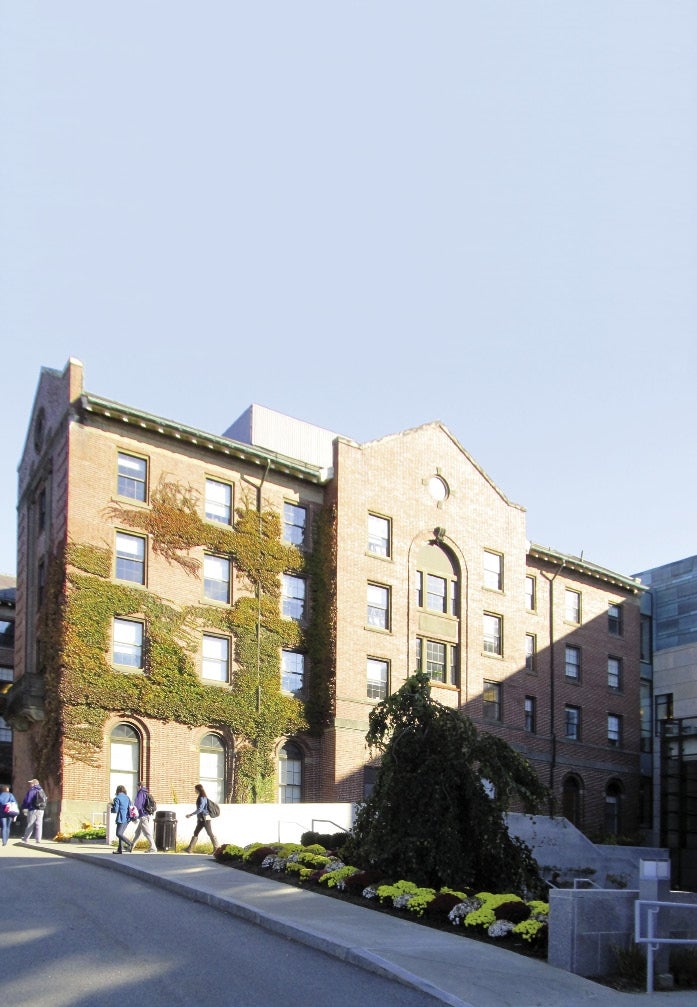If there’s one industry that benefited from the Great Recession, it’s higher education. Faced with tougher competition for jobs, more people enrolled in colleges and universities to finish or obtain more advanced degrees to stand out from the crowd.
But that influx of students may be petering out. Recent indicators show that college enrollment — which historically could be counted on to grow each year — is starting to contract.
The National Student Clearinghouse Research Center, which follows U.S. education trends, reported a 1.8-percent decrease in higher education enrollment in fall 2012, with enrollment in every sector except private, non-profit institutions declining from 2011, followed by a 2.3-percent decrease in the spring semester, compared to the spring of 2011.
“Those are absolutely the biggest declines we’ve ever recorded in higher education,” said Doug Shapiro, executive research director at the National Student Clearing House.
Shapiro said there are multiple factors at play, but the unprecedented nature of the Great Recession is chief among them.
Recessions in the 1980s and 1990s, and in 2001, also yielded higher-than-usual college enrollment, according to Shapiro, and when the economy improved, enrollment contracted to pre-recession levels. The historic increase in student enrollment at colleges and universities, followed by commensurate declines last fall, speaks to the depth of the recession, Shapiro said.
Demographics are also at play, with the number of U.S. high school graduates peaking during the recession, and remaining essentially flat since 2009, according to the National Student Clearinghouse.
Negative Outlook For Higher Ed
According to David Jacobson, spokesman for Moody’s Investors Service, the number of students graduating from high school is at its lowest in the Midwest and New England, painting a somewhat ominous picture for colleges and universities that cater to regional students. Meanwhile, the southern and western parts of the United States have stronger populations of graduating high school students, so Jacobson said many colleges and universities are bolstering their outreach in those parts of the country. For example, Northeastern University in Boston opened a satellite campus in Charlotte, N.C., in 2011, followed by another in Seattle in 2012.
If schools in the Northeast are going to keep up as the incoming student population shrinks, Jacobson said higher education executives will need to similarly adapt.
Earlier this year, Moody’s issued a negative outlook for the entire higher education industry, including, for the first-time, larger institutions that receive substantial funding from research grants as well as tuition.
Previously, the outlook was negative only for smaller schools that depend primarily on tuition as a revenue source. But Jacobsen said factors that impacted the entire industry brought the larger colleges and universities under the same umbrella.
Those included price sensitivity surrounding tuition — essentially, colleges and universities are having a difficult time raising tuition in an economy in which people aren’t willing to pay higher prices — as well as a rising student loan burden that’s changing the perception of the value of a college degree, Jacobson said.
Meanwhile, accreditation, which Jacobson said used to be a “rubber stamp,” is becoming more difficult, and uncertainty about the ability of higher-education officials to navigate these challenges further complicates the picture.
How will colleges and universities respond? For one thing, Jacobson said, more institutions have implemented tuition freezes or discounts, though he was unaware of examples in Central Massachusetts. And outreach programs targeting students outside the Northeast is crucial, considering the stagnant population of high school graduates.
Local Institutions React
In response to changing demographics in New England, The College of the Holy Cross in Worcester has stepped up efforts to attract students living in other areas of the country, according to Ann McDermott, director of admissions. A couple miles north, Assumption College has done something similar, stationing admissions officers in Providence and New York City while trying to strengthen its ties to Puerto Rico, which sends students to the school each year, an official at the college recently told the Worcester Business Journal.
At Holy Cross, about one-third of students hail from Massachusetts, but McDermott said it’s becoming more important to look beyond New England, which is why Holy Cross has been sending more staff members to meet with students in both the spring and fall, as they near decisions about where to enroll.
“I think our interest is more making sure our student body is representative of the entire country,” McDermott said. “It’s very important and that’s a challenge.”
As for enrollment levels, McDermott said Holy Cross made a strategic decision to accept fewer incoming freshmen this year, and will do the same for the foreseeable future. The college will cap the freshman class at 730 students, down from about 760 in recent years. That’s intended to reduce strain on housing and other resources, according to McDermott. She added that Holy Cross has no plans to expand to accommodate larger class sizes.
The same is true at Fitchburg State University (FSU), which saw a modest enrollment decline between 2011 and 2013. President Robert Antonucci said that, based on changing demographics and an anticipated continued decline in enrollment, the school has no plans to expand with new residence halls or academic buildings.
And FSU has had to become more aggressive in recruiting. As the Moody’s report cited price sensitivity and loan burden as factors that dissuade some students from pursuing college degrees, Antonucci said it’s getting harder to convince people that a college education is worth the investment.
And Shapiro, of the National Student Clearinghouse, noted that frugality has not led to increased interest in public institutions. He said those colleges and universities saw the greatest enrollment declines in fall 2012, as students who would typically attend a public college or university because of cost considerations may now be choosing to not attend college due to difficult economic conditions.
“I guess it’s a whole new push,” Antonucci said. “From a business standpoint, you’ve got to stay on top of it.”
Read more

